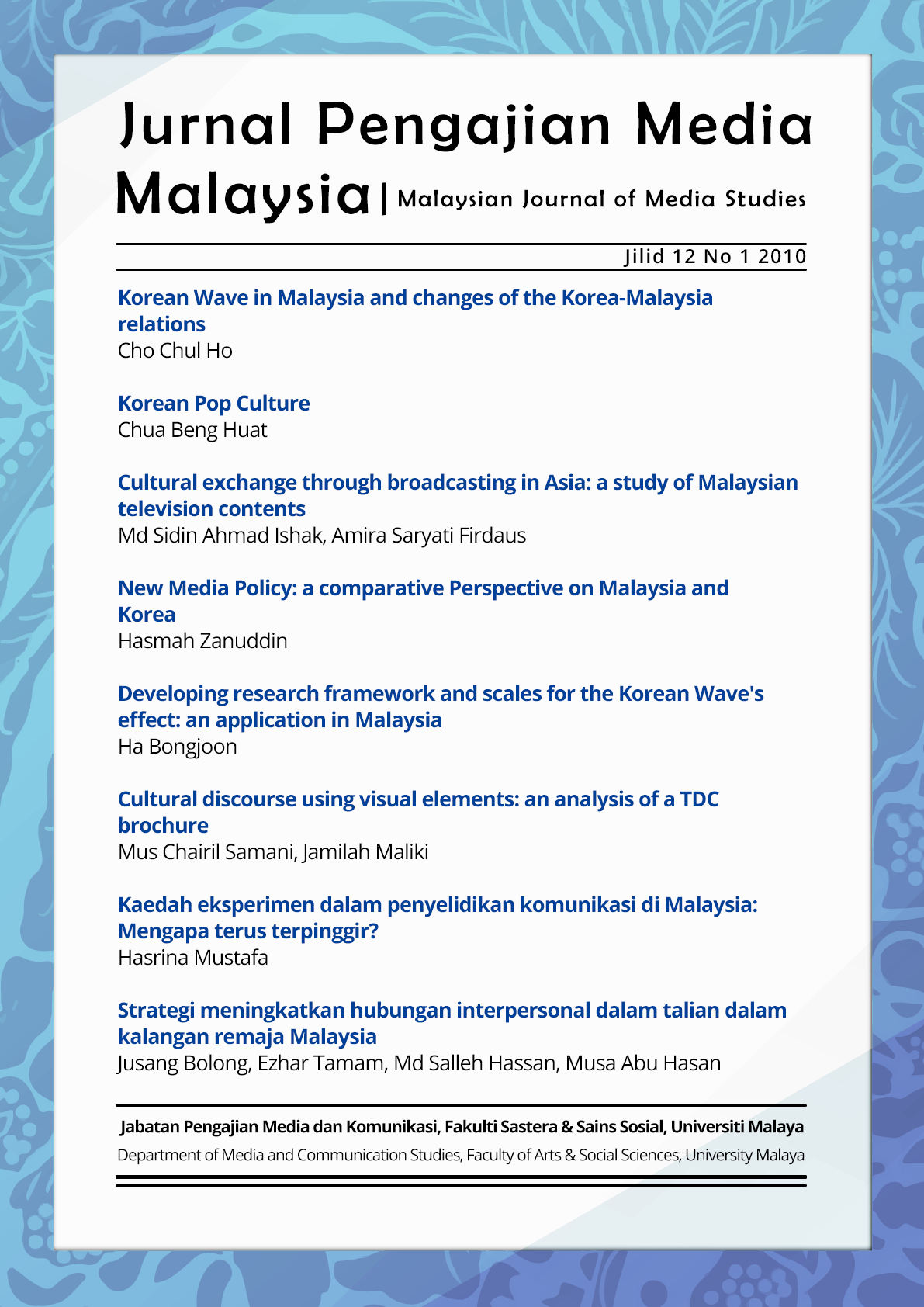Cultural exchange through broadcasting in Asia: a study of Malaysian television contents
Main Article Content
Abstract
Broadcasting is a contemporary channel of cultural exchange for many countries around the world. This study looks at cultural exchange in Malaysian terrestrial free-to-air television and discusses several contributing factors and constraints to the broadcasting of foreign programs on Malaysian television. The Malaysian terrestrial broadcasting landscape is made up of a government station broadcasting on two channels, and four television channels owned and operated by the Malaysian media giant, Media Prima. A brief analysis of weekly television programs shows that the greatest percentage of programs (in number and airtime) aired over Malaysian terrestrial television are in English, followed by local Malay language programs. Television programs in Chinese come third, and programs in other languages (namely various Asian languages and Spanish) make up smaller percentages of Malaysian terrestrial television content. The relatively small broadcasting market in Malaysia coupled with audience segmentation, are possible constraints to regional cultural exchange through broadcasting in this country. Furthermore, Malaysian media policy favors programming that serves local media players and content that encourages the formation of national cultural identity, two things that foreign programs are not able to do. Nonetheless, the prevalence of English language programming, both local and foreign (mainly American) is an anomaly. This shows the success of American cultural exports and their influence on market demand of popular television programs.
Downloads
Article Details

This work is licensed under a Creative Commons Attribution 4.0 International License.
